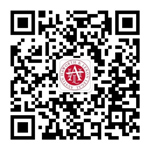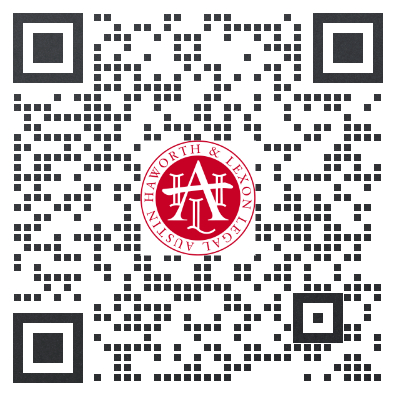【海量案例】BX & AXX [2014] FCCA 1XX5

ORDERS
(1) The Conciliation Conference appointed for 2:15 pm on 30 July 2014 is vacated.
(2) The parties are to attend a Conciliation Conference with a Registrar at 9:30 am on 2 October 2014.
(3) The Application in a Case filed on 30 June 2014 is dismissed.
(4) The Applicant Wife is to pay the Respondent’s costs fixed in the sum of $2929.00 within three (3) months.
IT IS NOTED that publication of this judgment under the pseudonym BX & AXX is approved pursuant to s.121(9)(g) of the Family Law Act 1975 (Cth).
FEDERAL CIRCUIT COURT
OF AUSTRALIA
AT SYDNEY
SYC 1XX8 of 2014
MS BX
Applicant
And
MR AXX
Respondent
REASONS FOR JUDGMENT
There are two Applications in a Case before the Court, although, in truth, the second of those two applications is, in effect, a response to the first. The background to this matter is that there are property proceedings and the Court previously ordered that the parties were to attend a Conciliation Conference before a Registrar of the Court at 2:15pm on 30 July.
The Husband, who is the Respondent in the substantive application, has filed an Application in the Case, seeking that the Conciliation Conference should be vacated and that a further conference should be listed on 1 October at 2 pm or a date to be fixed by this Court. There is also an application for costs.
The Wife, in her application, opposes those orders. What she, in fact, seeks is that the Conciliation Conference dated 30 July should be held, that the Husband pay the costs and that the Husband pay, in addition to the costs associated with order 2 sought by the wife, an appropriate sum of money to the Court as security for good behaviour, should the Court find the document titled (omitted) Hospital Diagnosis and Treatment records, dated 21 May 2014, to be fraudulent or otherwise inadmissible in the current family law proceedings pursuant to section 112AP(6)(c) of the Family Law Act 1975. That application is supported by an affidavit of the Applicant of 26 June.
As I made clear during the hearing, the application for security under subsection 112AP(6), is misconceived in that it would apply if the Court had found a contempt of court had been established under section 112AP. There is no application for the Respondent Husband to be dealt with for contempt, and so the Court would have no power to impose an order requiring an appropriate sum of money to be deposited as security for good behaviour.
The real issue between the parties is that the Husband is, on the basis of his affidavit, currently in China. He seeks to remain in China for a period of time, at least until the end of September, because, as he sets out in his affidavit, of the illness of his father. His father, who is aged 62, resides in (omitted) in (omitted) in China, and the Respondent has been in China caring for, as he says in his affidavit, both parents, but particularly his father who he says was diagnosed with cervical bone hyperplasia, lumbar disk herniation and calcified plaque accumulation in the blood vessels.
He deposes that he is the parties’ only child. He has annexed to his affidavit copies of documents in the Chinese language, translated into the English language, being a document headed the (omitted) Hospital Diagnosis and Treatment Records, and a document from the (omitted) University affiliated (omitted) Hospital , relating to a curriculum vitae of one Dr D, who is a medical practitioner, and a further document, forming annexure B, in the Chinese language with a translation in the English language, headed (omitted) Hospital Diagnosis and Treatment Records, which is over the signature of one Dr H.
The Respondent’s affidavit sets out, at paragraphs 26 to 28, that the Respondent’s mother has herself been suffering from health problems which have impacted on her ability to care for the Respondent’s father.
The Applicant Wife opposes the adjournment and believes the conference should continue. The adjournment is opposed on the basis that the Wife alleges that the documents relied on by the Husband are, in her view, fraudulent. To put it bluntly, the allegation is that the Husband has, in some way, produced forged documents relating to the father’s health, presumably for the purpose of obtaining an adjournment and delaying the proceedings from July until October.
I would comment that an allegation of fraud is a most serious allegation to make. It should only be made in circumstances where there is proof that would support such a serious allegation. The material relied on by the Wife consists of her affidavit, in which she makes a detailed analysis of the documents, and a further document, being a notarial certificate in the Chinese language, translated into English, supporting a document headed Introduction to Condition. That has been admitted into evidence over the objection of solicitors for the Husband and has been marked as Exhibit 1.
The document was produced late, but the explanation is that the document was only recently received from China and, in my view, the document is quite clearly relevant. Relevance, as is well known, is a most important criterion for the admissibility of material under the Evidence Act. Section 56, in effect, says that if something is relevant, it is admissible; if it is not relevant, it is not admissible. This document is clearly relevant and clearly admissible. It does not of itself necessarily contradict the documents produced by the Husband, although, in the page headed Introduction to Condition, there are five paragraphs which appear to contain some corrections.
It may well be that those corrections relate to the translation of the original document from the Chinese language into the English language, bearing in mind that this particular exhibit also involves a translation into English. Certainly paragraph 2 confirms that one Dr L is a physician in the Radiology Department. It says that he is not a physician in the Physical Treatment Department, which is hardly surprising. It confirms that one Dr W is a physician from the Community Health Service and is not a physician in the Neurology Department of the hospital.
I am not persuaded that that necessarily contradicts the material relied on. Certainly, looking at an annexure marked 3 in the Wife’s affidavit, there is an expert profile of Dr D, which clearly makes out that he is a general medical practitioner and that he appears to be employed in the Community Centre of the (omitted) University affiliated (omitted) Hospital. That is, one would think, an area where one would expect a general practitioner to be employed. There is also a summary from the (omitted) Hospital of (omitted), setting out the various branches of the hospital, and I am not of the view that that is contradicted by anything in Exhibit 1.
Certainly it does not appear to me that any of the documentation disproves the identity of Dr L as a physician in the Radiology Department. Clearly such a person would be expected to work in a large hospital. In my view, the basic flaw in the Wife’s case – and it is a fatal flaw – is that in order to prove that documents have been obtained fraudulently or are, in fact, forgeries, the proof of this is quintessentially a matter for expert evidence. There is no expert evidence. There is an affidavit from the Wife herself, who gives her occupation as unemployed.
In order to prove that a document is in fact forged or otherwise fraudulently produced, one would expect evidence from a person who is an expert in a field of examination of documents, and there are, of course, such persons. Indeed, it is well known that the Department of Immigration and Border Protection operates a section which relates specifically to the production of reports concerning documents relied upon by applicants for visas. This is well known to this court. The Wife does not give any evidence that she has ever been employed as a medical practitioner or a health professional in any respect, or that she has been employed in a hospital. What she says at paragraph 1 in her affidavit is that:
The following affidavit is based on my personal knowledge and recollection. Any dates or statements given are estimates and translations are given to the best of my knowledge of recollection.
It is not entirely clear, but, in effect, the Wife is relying on a layperson’s opinion as to the authenticity of a document. This must fall far short of the evidence required for the Court to find that a document relied upon has been forged.
Costs
The Husband seeks an order for costs. The question of costs must be decided by reference to section 117 of the Family Law Act. Whilst it is the case that, in the ordinary course of events under subsection (1) of section 117:
Each party to proceedings under this action shall bear his or her own costs –
Subsection (2) provides that:
If in proceedings under this Act the Court is of opinion that there are circumstances that justify it in doing so, the Court may make such order as to costs as the Court considers just.
In considering what order if any should be made under subsection (2) the Court shall have regard to the matters under subsection (2)(a) of section 117. This includes the financial circumstances of each of the parties to the proceedings and there is evidence in the Wife’s affidavit that she is currently unemployed. There is no evidence that either party is in receipt of assistance by way of Legal Aid. It is important to consider the conduct of the parties to the proceedings in relation to the proceedings, including and without limiting the generality of the foregoing, the conduct of the parties in relation to pleadings, particulars, discovery, inspection, directions to answer questions, admission of facts, production of documents and similar matters.
It is not relevant to consider whether the proceedings were necessitated by the failure of a party to comply with previous orders of the Court. There is no such failure alleged. It is relevant that one party to the proceedings has been wholly unsuccessful. There is no evidence of any offer in writing to the other party to settle this particular application.
The fact is that the application has been unsuccessful and entirely unsuccessful. To bring proceedings alleging fraud on the basis of such flimsy and unconvincing evidence is foolhardy in the extreme. The application for the Court to find that the document was in some way a forgery was misconceived.
In my view, this is clearly a matter for costs. It is not a matter where I would consider that indemnity costs should be ordered. Costs should be dealt with according to the Court scale. As I recall, there was a short mention on 12 June. The matter has been before the Court for half a day and it is an interim hearing. The costs, therefore, are set out in part 1 of schedule 1. Item 3 relates to an interim or summary hearing as a discrete event. There was a short mention on 12 June which is set out in item 13 and, in respect of the interim hearing, item 13 provides for the daily hearing for a half day hearing.
So allowing for a short mention on 12 June, allowing the lump sum provided by item 3 for an interim hearing as a discrete event, together with the daily hearing fee for a half-day hearing, I arrive at a total of $2,929.00.
I propose to order that the Wife is to pay the Husband’s costs fixed in the sum of $2929.00. I will allow three months to pay.
I certify that the preceding twenty-three (23) paragraphs are a true copy of the reasons for judgment of Judge Scarlett
Associate:
Date: 14 July 2014



 1300 91 66 77
1300 91 66 77







 首页
首页


